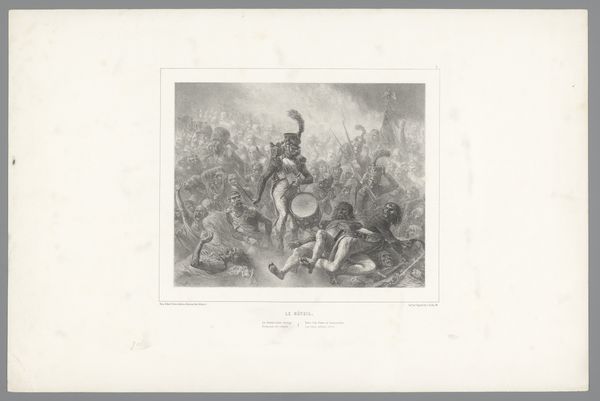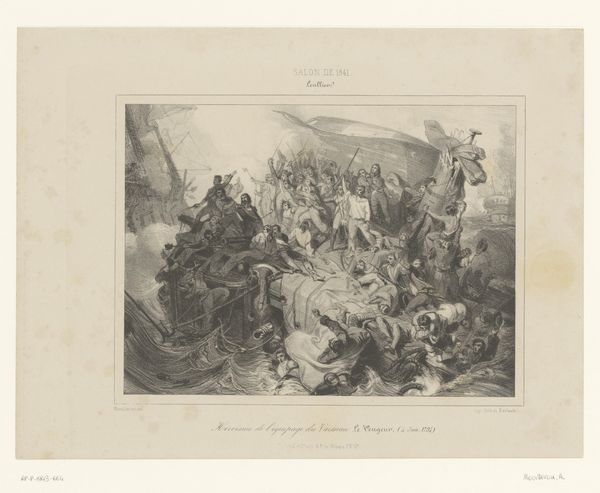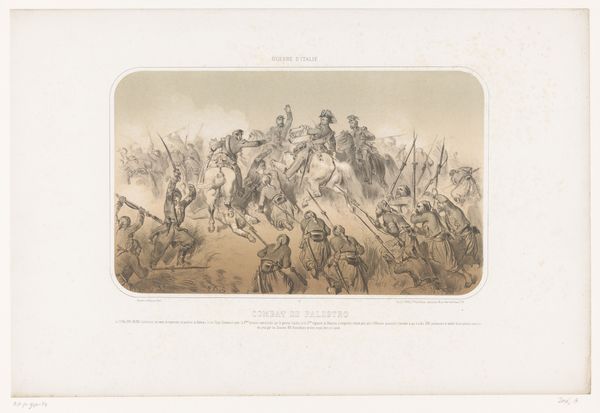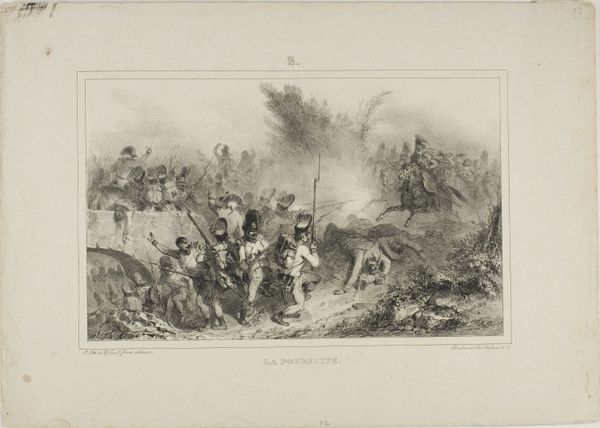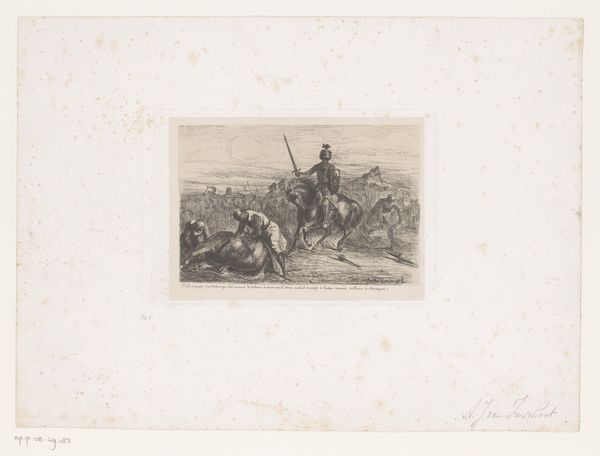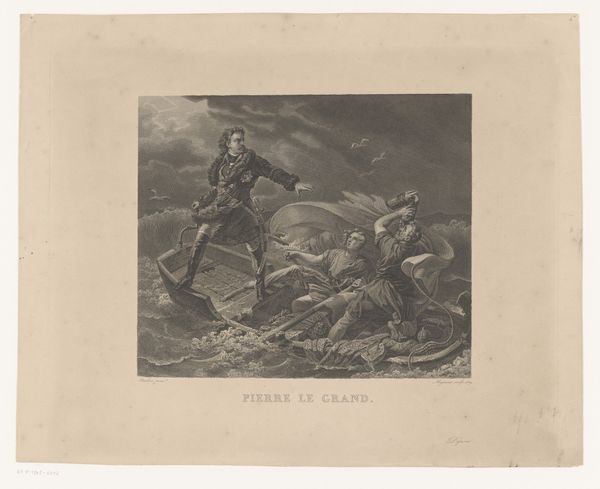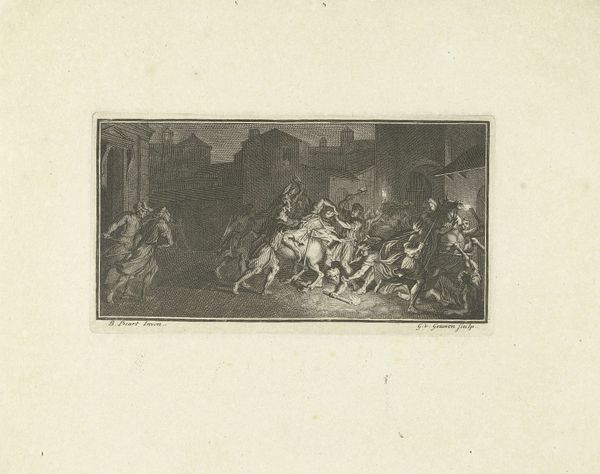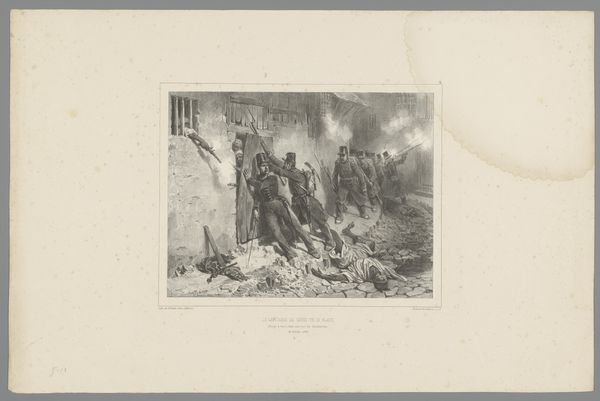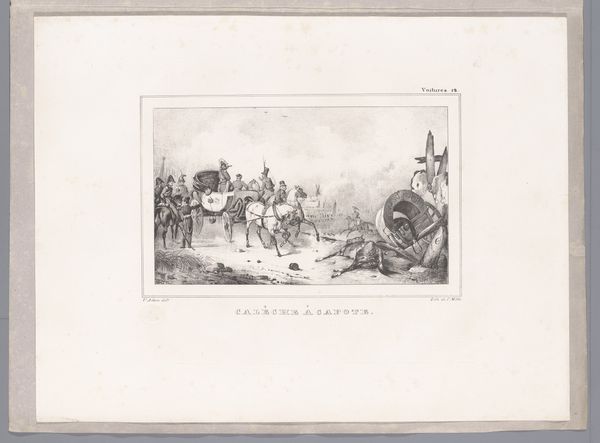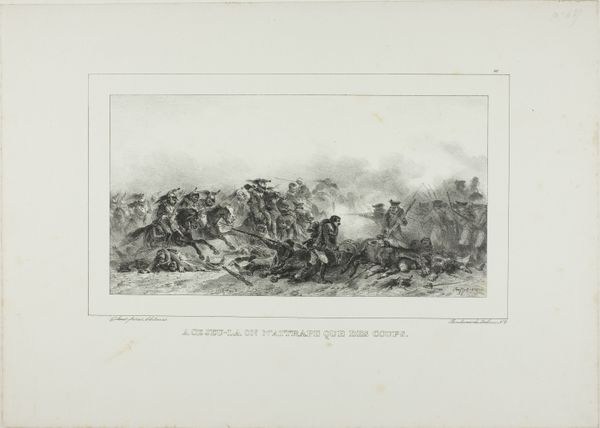
Franse soldaten worden getroffen door een ontploffende mijn, 13 oktober 1837 1838
0:00
0:00
print, etching, engraving
#
narrative-art
# print
#
etching
#
romanticism
#
history-painting
#
academic-art
#
engraving
Dimensions: height 357 mm, width 549 mm
Copyright: Rijks Museum: Open Domain
Editor: So, this is "Franse soldaten worden getroffen door een ontploffende mijn, 13 oktober 1837," or, "French soldiers hit by an exploding mine, October 13, 1837" by Auguste Raffet, made in 1838. It's an etching, so a print. It's incredibly chaotic. What strikes me is the instant the artist captured. What do you see in this work, especially given the title’s reference to a specific date? Curator: Well, it plunges us into the brutal reality of colonial conflict. This work can be viewed as part of a broader historical narrative where European powers violently imposed their will. Think about the narratives we are inheriting here. Who is telling this story, and whose perspective is centered? Editor: It does feel like it focuses on the French perspective... is the artist glorifying or condemning the scene? Curator: I don't think it is straightforwardly celebratory, but we must recognize the dominant discourse shaping its creation. The print media at the time served complex ideological purposes, often framing such events within a rhetoric of progress or national pride. What’s absent from the frame and why? Perhaps indigenous suffering or resistance are backgrounded. Does that lack shift your perception? Editor: Absolutely. I didn't consider whose story wasn't being told. Now the drama feels more... curated, less accidental. It definitely complicates the reading of Romanticism here, which usually I associate with nature or emotion. Curator: Exactly! Consider how Romanticism intersected with nationalism and colonialism in the 19th century. This piece invites us to question these connections and unpack whose narratives gain prominence. The seemingly straightforward representation reveals deeper, more troubling layers. Editor: That's really made me think about the role of art in shaping historical memory, not just reflecting it. Curator: Indeed, art doesn’t exist in a vacuum. Questioning the "why" of its creation becomes essential.
Comments
No comments
Be the first to comment and join the conversation on the ultimate creative platform.
